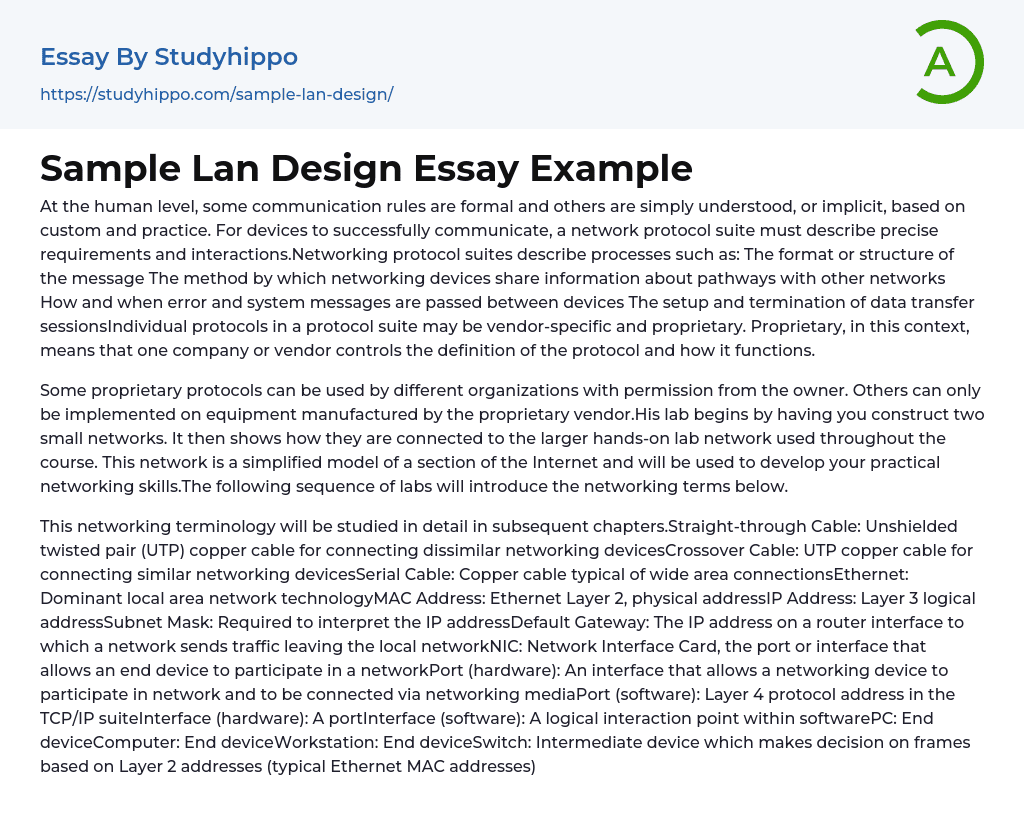In human communication, there are formal rules and implied rules based on custom and practice. To enable successful communication between devices, a network protocol suite must define specific requirements and interactions. The protocol suite outlines the format of messages, the sharing of information between networking devices, the passing of error and system messages, and the establishment and termination of data transfer sessions. It is possible for individual protocols within the suite to be vendor-specific and proprietary.
Proprietary refers to a situation where a single company or vendor determines the protocol definition and its functionality. Certain proprietary protocols can be utilized by various organizations with consent from the owner, while others are exclusively compatible with equipment manufactured by the specific vendor. The lab initially requires the creation of two smaller networks and subsequently demonstrates their connection to the broader hands-on lab network utilized throughou
t the course.
This network is a simplified model of a section of the Internet and will be used to develop your practical networking skills. The following sequence of labs will introduce the networking terms below. This networking terminology will be studied in detail in subsequent chapters.
Straight-through Cable: Unshielded twisted pair (UTP) copper cable for connecting dissimilar networking devices
Crossover Cable: UTP copper cable for connecting similar networking devices
Serial Cable: Copper cable typical of wide area connections
Ethernet: Dominant local area network technology
MAC Address: Ethernet Layer 2, physical address
IP Address: Layer 3 logical address
Subnet Mask: Required to interpret the IP address
Default Gateway: The IP address on a router interface to which a network sends traffic leaving the local network
NIC: Network Interface Card, the port or interface that allows an end device to participate in a network
Por
(hardware): An interface that allows a networking device to participate in network and to be connected via networking media
Port (software): Layer 4 protocol address in the TCP/IP suite
Interface (hardware): A port
Interface (software): A logical interaction point within software
PC: End device
Computer: End device
Workstation: End device
Switch: Intermediate device which makes decision on frames based on Layer 2 addresses (typical Ethernet MAC addresses)
- Networking essays
- Telecommunication essays
- Network Topology essays
- Telecommunications essays
- Android essays
- Application Software essays
- Benchmark essays
- Computer Network essays
- Computer Programming essays
- Computer Security essays
- Computer Software essays
- Cryptography essays
- Data collection essays
- Data Mining essays
- Graphic Design essays
- Information Systems essays
- Internet essays
- Network Security essays
- Website essays
- World Wide Web essays
- Architecture essays
- Design essays
- Graffiti essays
- Graphic essays
- Interior design essays
- Painting essays
- Photography essays
- Sculpture essays
- Typography essays




